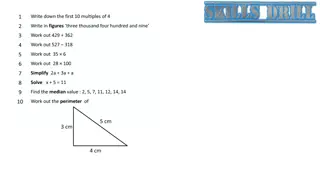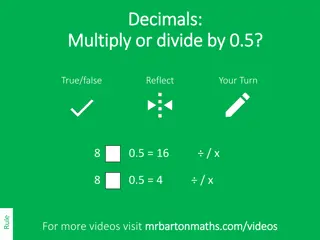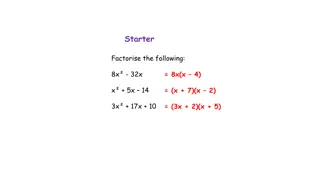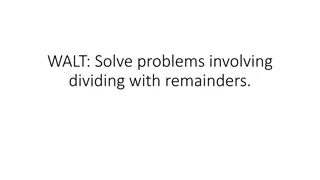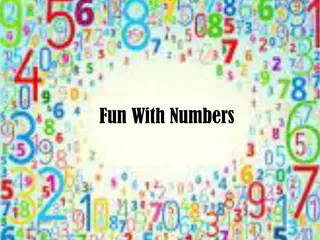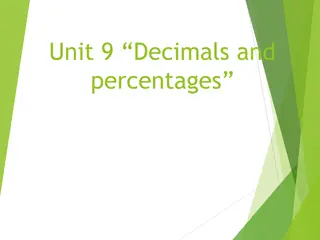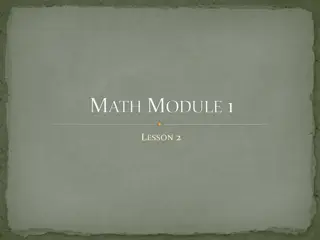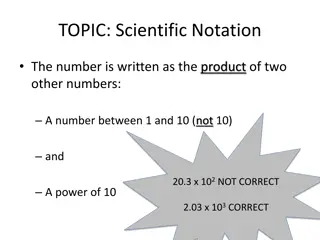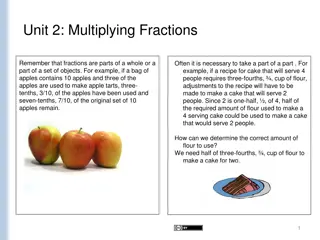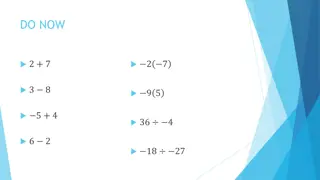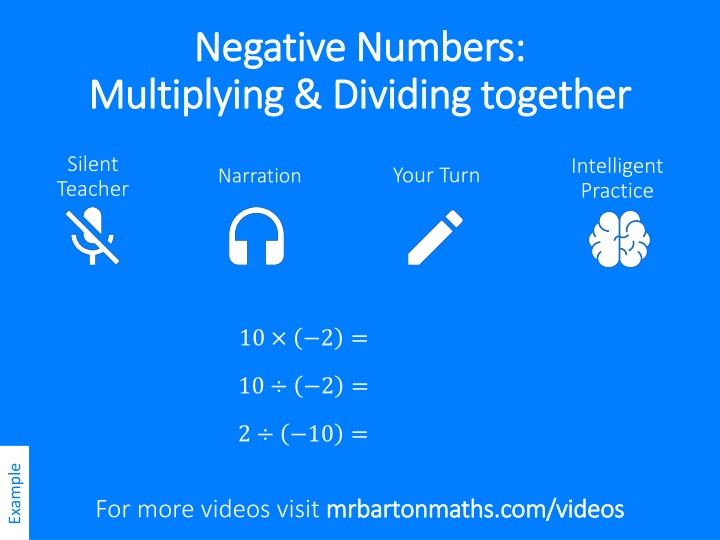
Understanding Negative Numbers: Multiplying and Dividing Techniques
Learn how to multiply and divide negative numbers effectively with examples and visual aids. Discover strategies for handling negative number operations and improve your math skills in a guided practice format. Visit the provided links for more educational resources.
Uploaded on | 0 Views
Download Presentation

Please find below an Image/Link to download the presentation.
The content on the website is provided AS IS for your information and personal use only. It may not be sold, licensed, or shared on other websites without obtaining consent from the author. If you encounter any issues during the download, it is possible that the publisher has removed the file from their server.
You are allowed to download the files provided on this website for personal or commercial use, subject to the condition that they are used lawfully. All files are the property of their respective owners.
The content on the website is provided AS IS for your information and personal use only. It may not be sold, licensed, or shared on other websites without obtaining consent from the author.
E N D
Presentation Transcript
Negative Numbers: Negative Numbers: Multiplying & Dividing together Multiplying & Dividing together Silent Teacher Intelligent Practice Your Turn Narration 10 2 = 10 2 = 2 10 = Example For more videos visit mrbartonmaths.com/videos mrbartonmaths.com/videos
Worked Example Your Turn 8 ( 4) = ( 8) ( 4) = ( 8) ( 4) = ( 8) 4 = @mrbartonmaths
2 10 = 2 ( 10) = 10 2 = 2 10 = 10 2 2 = ( 10) 2 = 10 2 ( 2) = 10 ( 2) = 10 ( 2) ( 2) = ( 10) ( 2) = ( 10) ( 2) ( 2) = ( 10) ( 2) = 10 ( 2) = ( 10) ( 2) ( 2) = ( 10) 2 = 10 ( 2) ( 2) = @mrbartonmaths
2 10 = 20 2 10 = 0.2 10 2 = 20 2 10 = 0.2 10 2 2 = 40 10 2 = 20 10 2 2 = 40 10 2 = 20 10 ( 2) ( 2) = 40 ( 10) ( 2) = 20 10 2 2 = 40 ( 10) ( 2) = 5 10 2 = 5 10 2 2 = 10 10 2 = 5 10 ( 2) ( 2) = 10 @mrbartonmaths





